Many off-road enthusiasts often ask themselves, “Is a dirt bike an ATV?” When it comes to off-road vehicles, dirt bikes, and ATVs are two popular choices, each with unique features and capabilities.
If you’re considering investing in an off-road vehicle, it’s important to understand the key differences between these two machines.
A dirt bike is specifically designed for off-road trails and tracks, offering a more lightweight and agile experience. In contrast, ATVs (all-terrain vehicles) are built with greater stability and usually cater to a variety of terrains.
When determining whether a dirt bike is an ATV, the consensus is that they are different types of off-road vehicles with specific strengths and weaknesses based on their design and intended use.
Key Takeaways
- Dirt bikes and ATVs are distinct types of off-road vehicles, each with their own advantages and limitations.
- Handling and control vary between dirt bikes and ATVs, influencing their suitability for different activities and terrain types.
- Legalities and regulations may differ based on whether you are operating a dirt bike or ATV, so it’s essential to understand the specific requirements for each vehicle.
Dirt Bike Basics
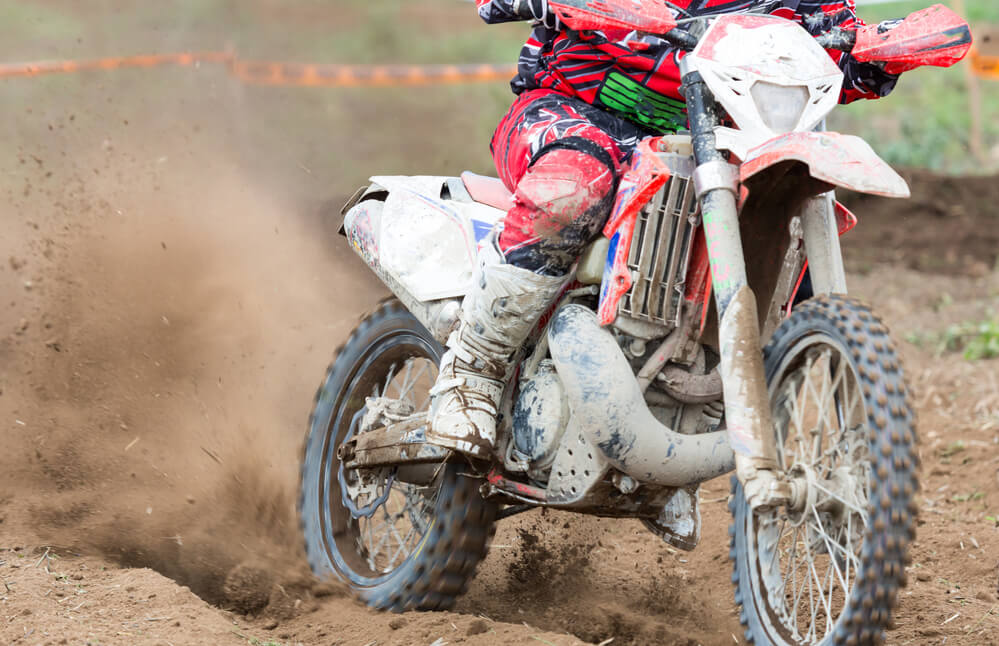
As a dirt bike enthusiast, it’s essential for you to understand the basic characteristics of these two-wheeled machines. Dirt bikes are specifically designed for off-road riding and racing, featuring lightweight frames, knobby tires, and advanced suspensions.
They require skill and constant balance from the rider, making them both challenging and exhilarating to ride.
While learning to ride a dirt bike, you’ll find that they have a narrower design compared to ATVs. This allows them to easily navigate tight trails and perform jumps. Your body positioning and weight distribution will play a critical role in successfully handling a dirt bike.
You’ll need to adjust your body position to maintain balance and control, making dirt biking a physically demanding activity.
Dirt bikes come in various engine sizes and types, from 50cc to 450cc, and are available as either two-stroke or four-stroke engines. Each engine type has its own unique characteristics, offering different levels of performance and maintenance requirements.
If you’re just starting out, it’s advisable, to begin with a smaller engine size and gradually progress to a more powerful one as you gain experience and confidence.
Along with understanding the basic components and structure of a dirt bike, it’s also important to be aware of the seasonal limitations of dirt biking. These machines are not as capable in colder conditions such as snow and ice as ATVs.
However, their agility and quickness make them perfect for tackling trails during warmer months.
As you venture into the world of dirt biking, always practice safe riding techniques, wear appropriate safety gear, and ensure your bike is well-maintained.
This will enable you to fully enjoy the thrill and excitement that dirt bikes have to offer while minimizing the risk of accidents and injuries.
ATV Basics
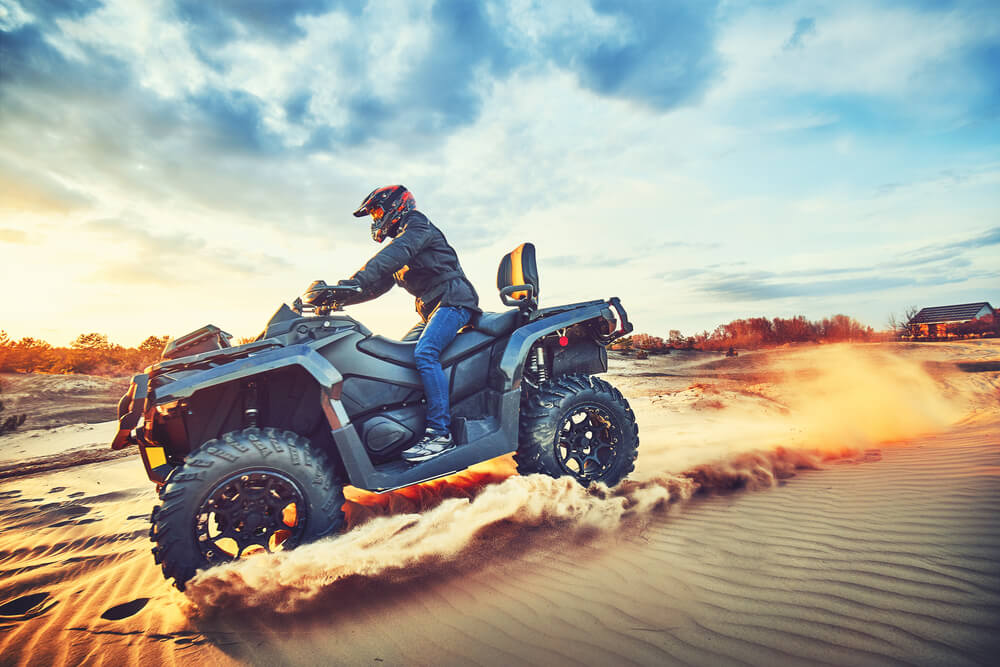
ATVs, known as All-Terrain Vehicles, are motorized off-highway vehicles designed to travel on four low-pressure or non-pneumatic tires. They have a seat that is typically straddled by the operator, along with handlebars for the steering control.
They can also be called quad bikes or quads, depending on the region.
As the name suggests, ATVs are built to handle various types of rugged terrain. They are commonly used for off-road riding and can often be found on trails, in sand dunes, or traversing muddy areas.
ATVs differ from dirt bikes mainly in their size, weight, and maneuverability. Dirt bikes are lighter and more agile, allowing for stunts and high-speed racing on off-road tracks.
ATVs are generally more stable due to their larger size and wider stance. This enables them to easily navigate through rough terrain and maintain balance, making them a popular choice for those looking for a more leisurely off-road experience.
Because of their additional weight and more extensive bodywork, ATVs have a higher center of gravity, which contributes to their stability and overall handling.
There are multiple types of ATVs, usually categorized by engine size and intended use. Some ATVs are specifically designed for work, like farming, landscaping, or utility tasks, while others are optimized for recreation and sport.
In conclusion, while dirt bikes and ATVs share similarities in their off-road capabilities, they are, in fact, distinct vehicles.
This distinction is mainly due to their unique design elements, such as size, weight, and maneuverability.
Physical Comparisons: Dirt Bike Vs ATV

When comparing a dirt bike and an ATV, you’ll immediately notice several differences in their physical features. A dirt bike is much smaller and lighter than an ATV, with only two wheels. This makes dirt bikes easier to maneuver and transport, but it also requires more effort to stay balanced while riding.
On the other hand, ATVs have four wheels and can weigh 2-3 times as much as a typical off-road dirt bike, providing more stability but often resulting in higher maintenance costs.
In terms of size, dirt bikes have a sleek and narrow frame, allowing them to fit into tighter spaces on the trails. This makes them better suited for navigating uneven terrain or riding through areas where an ATV might struggle.
Additionally, the rider’s position on a dirt bike is more upright, with a seat designed for standing, which can offer a better view of the terrain and more control.
ATVs, being larger and heavier, offer more stability and room for storage. The wider stance of an ATV gives riders a feeling of greater security while riding, which can be advantageous on rough terrain or in snowy conditions.
The seating position is more relaxed on an ATV, with a wider and more comfortable seat for longer rides.
Moreover, ATVs often come with a rear rack for carrying gear, which could be useful during outdoor adventures.
In terms of power, both dirt bikes and ATVs feature engines with varying levels of horsepower and capacity. However, due to the lighter weight of dirt bikes, they usually provide a higher power-to-weight ratio, resulting in faster acceleration and better agility on the trails.
ATVs, while often slower and less nimble than dirt bikes, deliver more torque and can tow or carry heavier loads, making them more versatile in certain situations.
Overall, depending on your needs and preferences, you may prefer the agility and lightweight nature of a dirt bike or the stability and versatility of an ATV when choosing your off-road vehicle.
Handling and Control
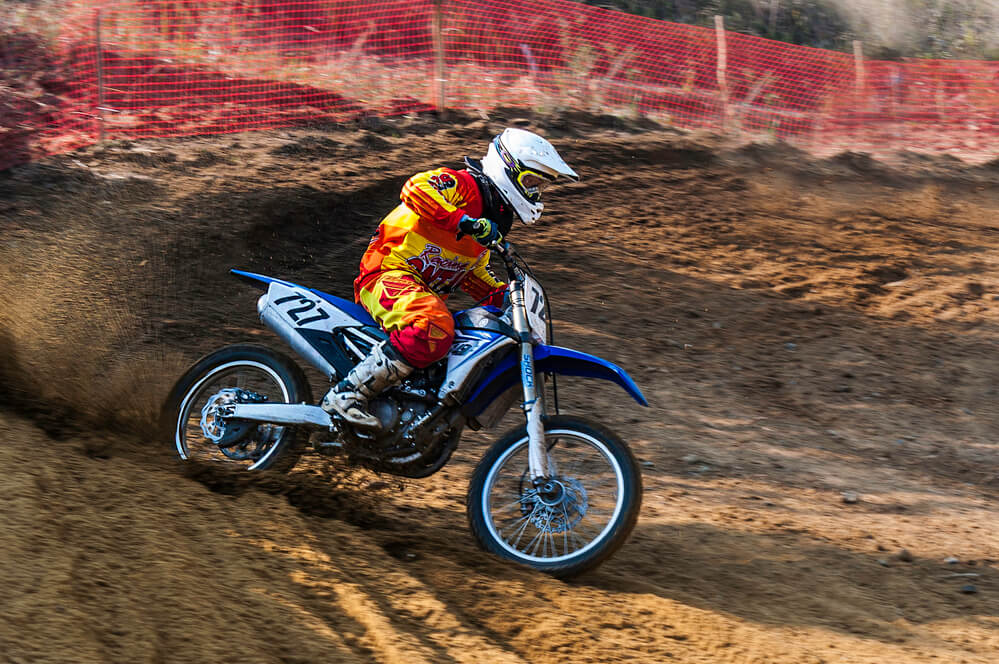
When comparing dirt bikes and ATVs, you’ll notice several differences in their handling and control. In general, dirt bikes offer more agility and maneuverability, while ATVs provide more stability and a broader range of use.
Dirt bikes are often lighter and easier to control off-road, allowing you to navigate tight turns and jump over obstacles with ease. This nimbleness makes dirt bikes well-suited for motocross tracks, trail riding, and enduro races.
You can quickly shift your body weight and adjust your balance to optimize your riding experience.
On the other hand, ATVs are designed for versatility and stability. With their four-wheeled design, ATVs can handle various types of terrain, including sand, mud, and snow, without the risk of losing the balance that dirt bikes face.
Nevertheless, this stability comes at the expense of agility, making ATVs less suited for high-speed racing or technical courses.
A significant factor in handling and control is the rider’s experience and skill level. Beginners may find ATVs less intimidating, as they don’t require the same level of balance and technique as dirt bikes.
Yet, once you become proficient in riding a dirt bike, you’ll appreciate the extra control and maneuverability it offers.
Ultimately, your choice between a dirt bike and an ATV comes down to your personal preferences and riding goals. If you value agility, speed, and a more intense riding experience, you might prefer a dirt bike.
If you’re looking for a stable and versatile machine for various outdoor activities, an ATV could be the better option for you.
Utilization and Purpose
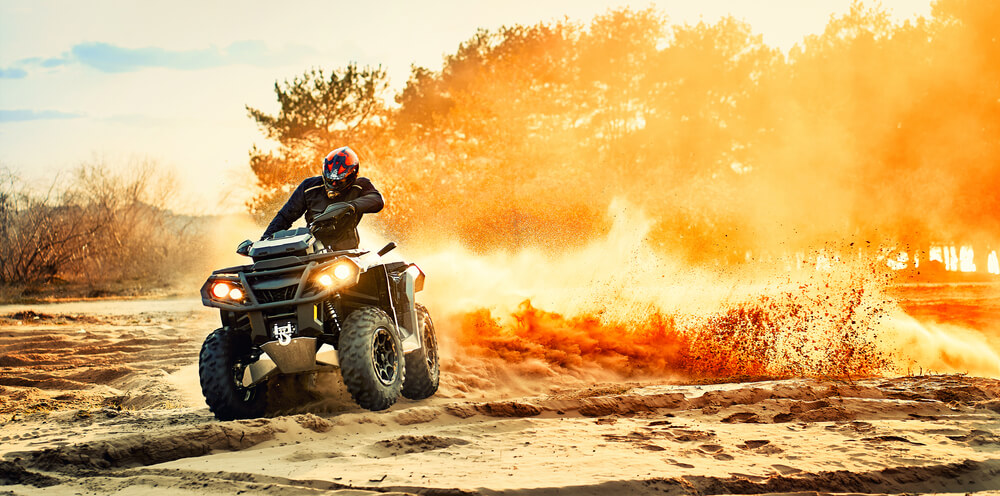
When it comes to the utilization and purpose of dirt bikes and ATVs, there are several key differences that you should consider.
Firstly, both vehicles are primarily designed for off-road use, but their specific uses vary in some ways.
Dirt bikes are mainly used for off-road racing, motocross, trail riding, and even sometimes for transportation on rough terrains. Their lightweight design, powerful engines, and agile handling make them suitable for tackling challenging trails and jumps with ease.
Riders can easily maneuver dirt bikes on narrow paths and sharp turns, making them popular among off-road enthusiasts looking for a thrill.
Moreover, dirt bikes tend to require more riding skills to master, but their increased handling capabilities are well worth the effort for those who enjoy a challenge.
On the other hand, ATVs, or “All Terrain Vehicles,” serve a wider range of purposes. While they can also be used for off-road racing and recreational riding, they often have additional uses such as agricultural work, hunting, and utility tasks.
Thanks to their four-wheel design, ATVs generally provide greater stability and are easier for beginners to learn to ride. They also have the ability to tow small loads, and some models come with specialized features for specific tasks, like plow attachments for clearing snow.
Unlike dirt bikes, ATVs offer a seating position that many find more comfortable and less physically demanding during long rides.
In terms of terrain capabilities, dirt bikes can handle a variety of off-road conditions, but ATVs have a slight advantage in terms of versatility.
Four-wheel drive ATVs are built for maximum traction and utility on various surfaces, including mud, gravel, and hills. Overall, choosing between a dirt bike and an ATV comes down to your intended use and personal preference.
Safety Measures
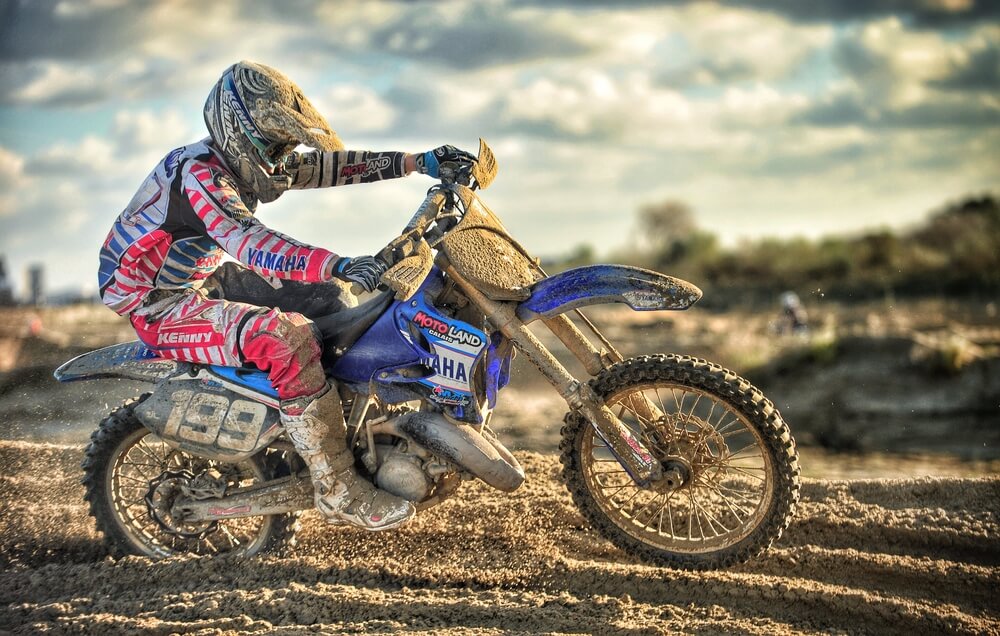
When operating dirt bikes or ATVs, it’s vital to prioritize safety to minimize potential hazards.
In this section, we’ll outline some crucial safety measures you should follow while using these vehicles.
Before riding, always conduct a thorough inspection of your dirt bike or ATV. Examine the tires for wear, rims for damage, and ensure all crucial components are functioning correctly.
Just like with any vehicle, performing routine maintenance is essential to keeping your ride safe and enjoyable.
Don’t forget to wear appropriate safety gear when riding. A helmet, goggles, gloves, and boots are crucial to protecting yourself in case of an accident. It’s worth noting that ATVs might be more dangerous to young riders, especially below 16 years old.
Consequently, user age can play a vital role in choosing the right vehicle type and determining the safety measures required.
When it comes to learning techniques on either a dirt bike or an ATV, enrolling in a training course or seeking the guidance of an experienced rider can significantly enhance your ability to ride safely.
Familiarize yourself with the specific handling characteristics of your vehicle choice and develop adequate skills before attempting challenging terrains or maneuvers.
Lastly, always follow safety practices concerning group riding and the environment. Be respectful of other riders, yield to pedestrians and heavier vehicles, and stay on designated trails to minimize potential hazards.
Remember to adjust your speed according to the terrain and conditions you’re riding in, and avoid consuming alcohol or drugs before or during your ride.
By implementing these safety measures and fostering a responsible approach to dirt bike and ATV riding, you can enjoy your outdoor adventures with minimized risk.
Legalities and Regulations
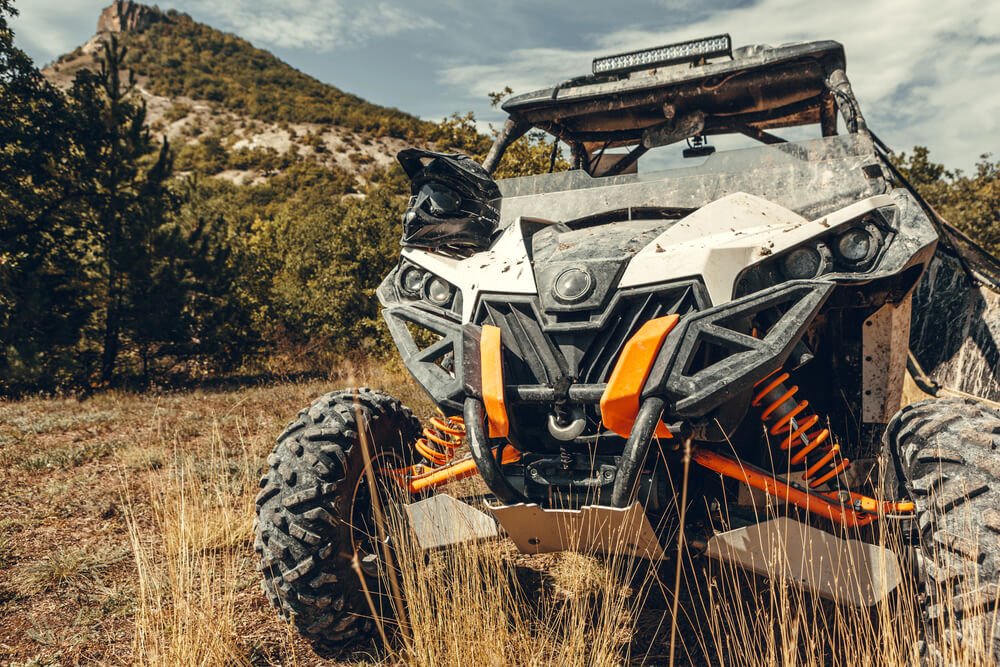
When it comes to the legalities and regulations surrounding dirt bikes and ATVs, it’s important to understand the differences between the two and the specific requirements imposed by each state.
Generally, a dirt bike is a lightweight, off-road motorcycle designed for rough terrain, while an ATV (All-Terrain Vehicle) is a four-wheeler designed for use on various types of terrain.
Firstly, you should be aware that riding your dirt bike off-road does not typically require an operator’s license or liability insurance in almost all states.
About half of the states do have age restrictions on riders, with most states simply requiring parental supervision for minors under a certain age.
Conversely, state laws for ATVs and UTVs (Utility Task Vehicles) tend to vary depending on the state in which you are driving.
Some general regulations you may encounter include age restrictions, mandatory safety training, wearing helmets, and the necessity of registering your ATV or UTV.
It is crucial to follow any state-specific guidelines when riding a dirt bike on ATV trails, as each state has its own requirements, which may include registration, helmet usage, and other safety precautions.
Lastly, the Environmental Protection Agency (EPA) plays a role in regulating ATVs and dirt bikes, providing certification materials and guidance for manufacturers to ensure compliance with emission standards.
To ensure a safe and legal off-road experience, it is essential that you research and adhere to the specific regulations in your state for both dirt bikes and ATVs.
Conclusion
In summary, a dirt bike is not considered an ATV. While both vehicles share similarities in off-road capabilities, they differ in overall design and purpose.
Dirt bikes are essentially motorcycles designed for off-road riding on rough terrain, whereas ATVs are crafted to be driven on various types of terrain with greater stability.
When you compare dirt bikes with ATVs, you’ll notice that dirt bikes are lighter, offering better fuel efficiency and speed. Their slim design also makes them easier to transport and store.
In contrast, ATVs provide more versatility and comfort for the rider, making them ideal for different types of terrain or purposes such as utility, recreation, or farming.
Ultimately, the choice between a dirt bike and an ATV comes down to your individual preferences and intended use for the vehicle. Familiarize yourself with the pros and cons of each before making a decision.
As a rider, always prioritize safety and adhere to proper off-road etiquette, no matter which vehicle you choose.
Frequently Asked Questions
What is the primary difference between dirt bikes and ATVs?
Dirt bikes and ATVs are both designed for off-road use, but they have some key differences. Dirt bikes are smaller, lighter, and more maneuverable, making them suitable for faster speeds and more adventurous riding.
ATVs, on the other hand, are more stable and versatile, allowing for light work tasks and transporting gear. They also have four wheels, which provide more traction on various terrains.
Which is typically safer to ride: dirt bikes or ATVs?
It’s difficult to definitively say which is safer, as it depends on the rider’s skill level, the terrain, and the safety precautions taken.
However, ATVs can offer more stability compared to dirt bikes due to their wider wheelbase and four wheels. It’s crucial to always wear proper safety gear and follow the appropriate safety guidelines for both vehicles to minimize the risk of accidents.
Can dirt bikes be ridden on ATV trails in most states?
Trail access for dirt bikes and ATVs can vary by state and by specific trail. Some trails permit both dirt bikes and ATVs, while others may have restrictions or different paths for each type of vehicle.
It is important to check the regulations for each location you plan to ride, as they may differ from one place to another.
Are four-wheelers and dirt bikes classified differently for licensing purposes?
Yes, four-wheelers (ATVs) and dirt bikes are typically classified differently for licensing purposes. ATVs are considered off-road vehicles and may require different registration and licensing procedures than dirt bikes, depending on the state.
Always check your state’s specific requirements for both vehicles to ensure compliance.
Which is easier for beginners to learn: dirt bike or ATV riding?
Both dirt bike and ATV riding have their own learning curves, but some beginners may find ATV riding more accessible due to the increased stability provided by their four wheels. By contrast, learning dirt bike riding requires more balance and agility.
Yet, every beginner is different, and it’s essential to practice and gain experience with whichever type of vehicle you choose.
What makes dirt bikes better than four-wheelers for some activities?
Dirt bikes have several advantages over ATVs, depending on the activity, such as being more agile and able to navigate narrower trails. Their lighter weight also allows for better acceleration and easier handling in more difficult terrain.
These characteristics make dirt bikes better suited for trail riding, motocross, and other similar sports.
Regardless, ATVs excel in other areas, like transporting equipment and performing lighter work tasks.














